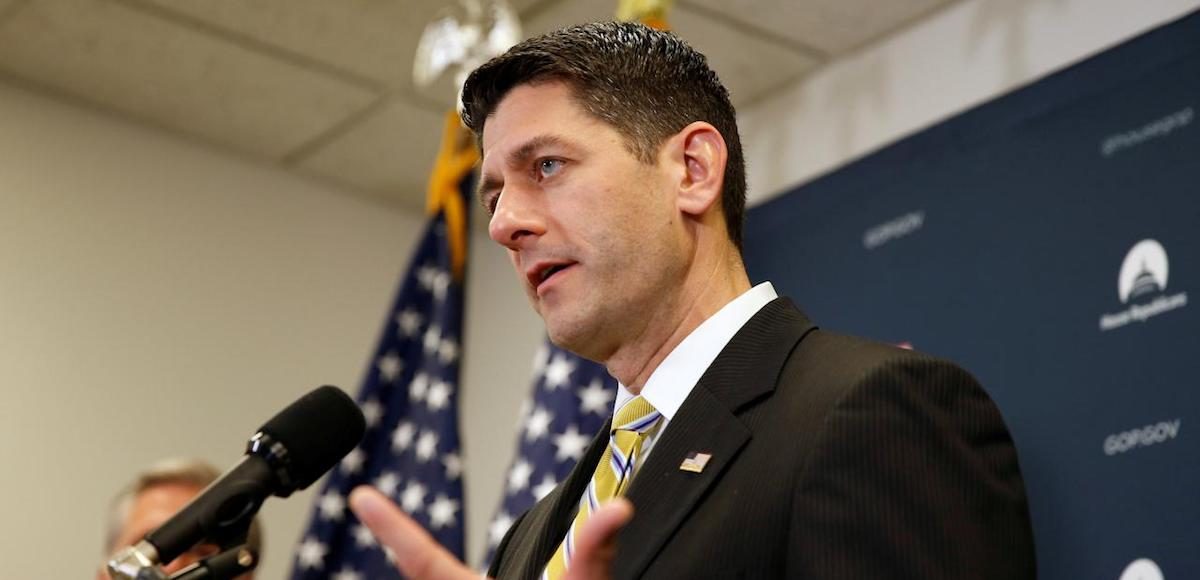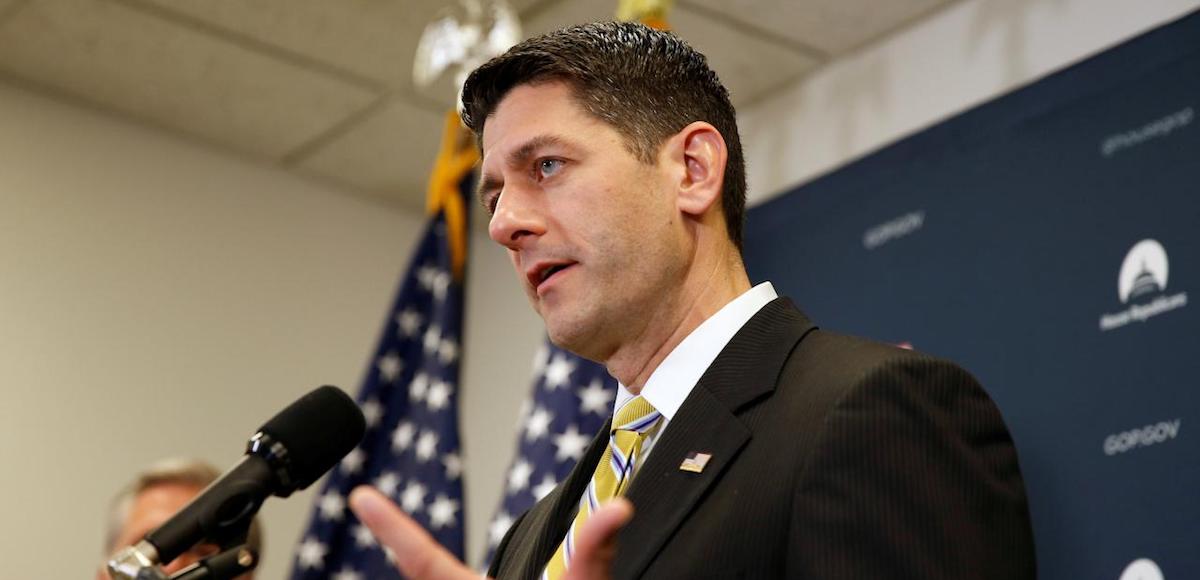

Speaker of the House Paul Ryan (R-WI) speaks during a press briefing on Capitol Hill in Washington, U.S., May 23, 2017. (Photo: Reuters)
The swamp is pulsating with excitement. For the lobbying community, tax reform is like Christmas. No matter what happens, they win because of lucrative retainers and fat contracts.
And what about libertarian policy wonks? What do we get? Well, we look at the sausage-making process in Washington with disdain, but we hope that the final outcome is a less-destructive tax system.
And there are some interesting debates along the way. Here’s an interview I did a couple of days ago with Maya MacGuineas of the Committee for a Responsible Federal Budget. We touch on several topics relating to tax reform, but pay close attention to the discussion on federal spending and red ink because you’ll see a very interesting mix of agreement and disagreement.
There are big areas of overlap. We both like spending restraint. We both favor getting rid of loopholes (though I fear she may favor the Haig-Simons definition of loopholes rather than the consumption-base definition). And we both seem to agree that lower tax rates can improve economic performance.
But it seems we might diverge on whether a stand-alone tax cut is desirable. My view is that the right kind of tax cut will boost incentives for productive behavior. Yes, that can produce more red ink, but that’s not necessarily a bad thing if it “starves the beast” and creates pressure to restrain the growth of spending. I’m motivated by a desire to limit the overall size of government.
Maya, by contrast, is not happy that Congress is considering a stand-alone tax cut. As a “deficit hawk,” she would prefer that the tax cut be “paid for” with spending restraint or by cutting back on tax preferences. She is motivated by a desire to limit red ink.
For what it’s worth, I think she’s focusing on the symptom or red ink when it would be better to focus on the underlying disease of excessive spending.
I think this 2×2 matrix is a good way of illustrating our areas of agreement and disagreement. Libertarians like me are in the top-left box. Indeed, in the top-left corner of the top-left box. I want less spending and lower taxes. Deficit hawks like Maya, by contrast, are going to be somewhere in the lower-left box since they want less spending but are open to higher taxes.

I also added other groups to the matrix, such as Reaganites (i.e. the Gipper), populists (i.e., Trump), and so-called compassionate conservatives (i.e., Bush). As well as some Democratic politicians such as Bill Clinton, Hillary Clinton, and Crazy Bernie. Since I’m going by gut instinct, I’m not going to claim everybody is in the exact right spot, but I do think this is a decent representation of the real debate in Washington.
But it’s not a perfect representation. For instance, we know the folks in the lower-left box care about red ink. But you can also find people in the top-left box and lower-right box who favor balanced budgets. Perhaps there should be a diagonal line from the top left to the lower right so that we can see who wants balanced budgets and/or budget surpluses.
So here’s a slightly more cluttered version of my fiscal matrix.

And I added Hong Kong and Sweden to the matrix to show that balanced budgets are possible with small government or big government.
Last but not least, I decided to create one more visual. The fiscal matrix is mostly designed to show preferences on spending and taxes, with the obvious implication that people below the diagonal line don’t like deficits.
But if we consider just red ink, here’s a spectrum showing how people view deficits. Maya and her group are in the deficits-are-horrible camp on one end, while the deficits-are-wonderful Keynesians are on the other end. And I put myself in the middle to represent the alleged voice of moderation.

Though even this spectrum isn’t really accurate since Keynes only believed in deficits during a downturn. And I confess I have no idea whether Maya would support red ink in that circumstance.
By the way, I can’t resist commenting on a few other moments in the interview.
- First, Maya said that tax cuts don’t pay for themselves. That’s true (except in rare circumstances), but it’s still very important to realize that supply-side tax cuts can produce some degree of revenue feedback.
- Second, modest spending restraint would enable both huge tax cuts and a balanced budget.
- Third, Republicans in Congress actually approved budgets that restrained spending when Obama was in the White House — hence, my reference in the interview to the Ryan budgets.
I’ll close with a grim prediction. The tax reform battle will be Part II of the ObamaCare repeal battle. I fear the effort will come to naught. Those 76,000 pages in the tax code are defended by too many powerful interest groups.






